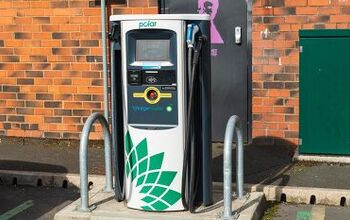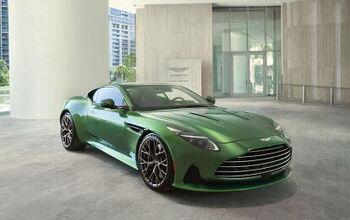Roads Aren't Nearly As Empty As You'd Think, Which Shouldn't Come As a Surprise

Following two weeks of unseasonably cold weather that seemed to put spring on hold, Saturday was a gorgeous day in this writer’s city. Warm temps, endless sunshine, and a pandemic that compelled public health officials to tell everyone to stay indoors for the fifth weekend in a row. Or was it the sixth? Time feels more fluid than it once was.
Anyway, yours truly was on the road, seeking an escape from humanity. With too many potential walking or running spaces overrun with people or, oddly, closed off for public safety, I realized I needed to go further afield to distance myself from this constrained, antsy populace. And so I hopped on the highway… and found myself driving in a near-normal level of traffic for the first time since this all began.
Was everyone being an asshole? Was I?
Ghostly freeways crying out for a cinematic tumbleweed marked the early days of lockdown, but road traffic isn’t nearly as absent as some might think. Sure, North America has seen a sharp drop in driving, but not to the degree health officials would clearly like.
As reported by The Washington Post, data compiled by traffic analytics firms like Wejo and Inrix reveal that driving is really only halved. And barely that. Wejo data shows that car trips in Washington DC, Maryland, and Virginia last Wednesday amounted to somewhere between 51 and 59 percent of normal, depending on locale. In California, daily trips are 58 percent of normal.
Seattle, the first American city to be publicly hit hard by the coronavirus pandemic (though studies now show the virus existed in other cities, like L.A., long before its official arrival), saw distances traveled by car at 55 percent of normal at the end of March. The last couple of weeks has seen that figure hover around 50 percent.
This, despite a vast majority of Americans saying they’re staying home as much as possible. And in those homes are stockpiles of essentials that six in 10 Americans say they’ve long since bought.
Well, stockpiles run out, and essential workers still need to get to their jobs. As the weather gets better in northerly regions and people increasingly take to the streets for recreation and exercise, miles traveled will only increase. I drove across the city to an outlying aggregate quarry on Saturday to soak up the rays as far away from any other human being as possible; my only companion that afternoon being a small, curious garter snake. You can bet I wasn’t alone in seeking an urban exodus.
There’s another factor to consider — the hard truth that most miles driven are for personal errands, not for things like commuting. And in this day and age, those personal errands are more likely to be accomplished via a personal vehicle.
Transit authorities have curtailed service, and who wants to be in a (potentially virus-filled) bus or train if they can help it? Twentieth century philosopher Gary Numan was speaking from the heart, and maybe the future, when he wrote, “Here in my car, I feel safest of all…”
“There’s a certain level of automobile use built into our daily lives, even when we’re not going into the office or to a restaurant to socialize,” Trevor Reed, a transportation analyst at Inrix, told WaPo. “Social distancing is by definition not coming into contact with other people. It doesn’t mean stop moving. People could be social distancing perfectly, and you’d still see vehicles on the road.”
While transportation app Waze claims per-day U.S. driving miles were down roughly 67 percent on April 10th, our roadways would need something like a chemical weapons attack or nuclear first strike warning to clear, and even that wouldn’t guarantee empty streets. Perhaps quite the opposite, if disaster films tell us anything.
Still, they’ve cleared enough in hard-hit urban centers to spark think pieces like this on the pitfalls of car-centric land use in the time of social distancing. A hater of germs myself, I’m more sympathetic to this viewpoint than you’d think. The car’s not going away, no matter how hard urbanists scream and cry, but neither is COVID-19. Sidewalks become crowded in a hurry, making the goal of maintaining a six-foot radius a pipe dream.
Myself, I’ve taken to walking up the middle of the street during my after-dark forays through the neighborhood (errands are largely completed by that time).
For sure, it will be interesting to see what solutions cities throw together when lockdown measures ease and cars and COVID-19 considerations have to coexist for a time. Blocked-off street parking seems a popular sidewalk-widening option, with some cities electing to close down certain roadways to vehicular traffic altogether. In some cases, these measures might become permanent.
[Images: Stephan Guarch/Shutterstock, General Motors]

More by Steph Willems
Latest Car Reviews
Read moreLatest Product Reviews
Read moreRecent Comments
- Lou_BC Well, I'd be impressed if this was in a ZR2. LOL
- Lou_BC This is my shocked face 😲 Hope formatting doesn't fook this up LOL
- Lou_BC Junior? Would that be a Beta Romeo?
- Lou_BC Gotta fix that formatting problem. What a pile of bullsh!t. Are longer posts costing TTAC money? FOOK
- Lou_BC 1.Honda: 6,334,825 vehicles potentially affected2.Ford: 6,152,6143.Kia America: 3,110,4474.Chrysler: 2,732,3985.General Motors: 2,021,0336.Nissan North America: 1,804,4437.Mercedes-Benz USA: 478,1738.Volkswagen Group of America: 453,7639.BMW of North America: 340,24910.Daimler Trucks North America: 261,959



































Comments
Join the conversation
In the NYC area, I did lower Manhattan twice from the burbs in under an hour. Normally a 90-120 minute horror, I wasn't even Cannonball-ing. 1947 levels of traffic all around. Had to tend a family matter upstate. Thruway. No one but trucks. No cops. No minivans with texting drivers. Next Exit, Stuttgart. The C does top out where they say it does. Not always, though. I live near a few popular State Parks, and my formerly quiet hike trail heads are suddenly full of new people. One park has been closed due to traffic many times, something you only see maybe once in August. Office parks are empty but the Lowes and HD parking lots are full. The mall mama works at is closed....so YMMV.
Los Angeles freeway traffic is much looser than normal, I drove it North to South in 20 minutes last night in the late rush hour times . Way too many racer bois crashing late at night ~ the amount of crashes has dropped over 50 % the amount of damage and death has risen well over 50 % due entirely to excess speed and lack of driving skills . Bummer this as I finally got my old Honda running and riding but not going to get run over riding after sunset again ~ once was enough . ? Where the hell do I get my hair cut ? . I'd shave my self bald but all the damn bumps in my (empty) skull mean I'd prolly bleed to death . This isn't the fun filled retirement I'd hoped and worked for . I wonder what percentage of readers here live in apartments ? . -Nate